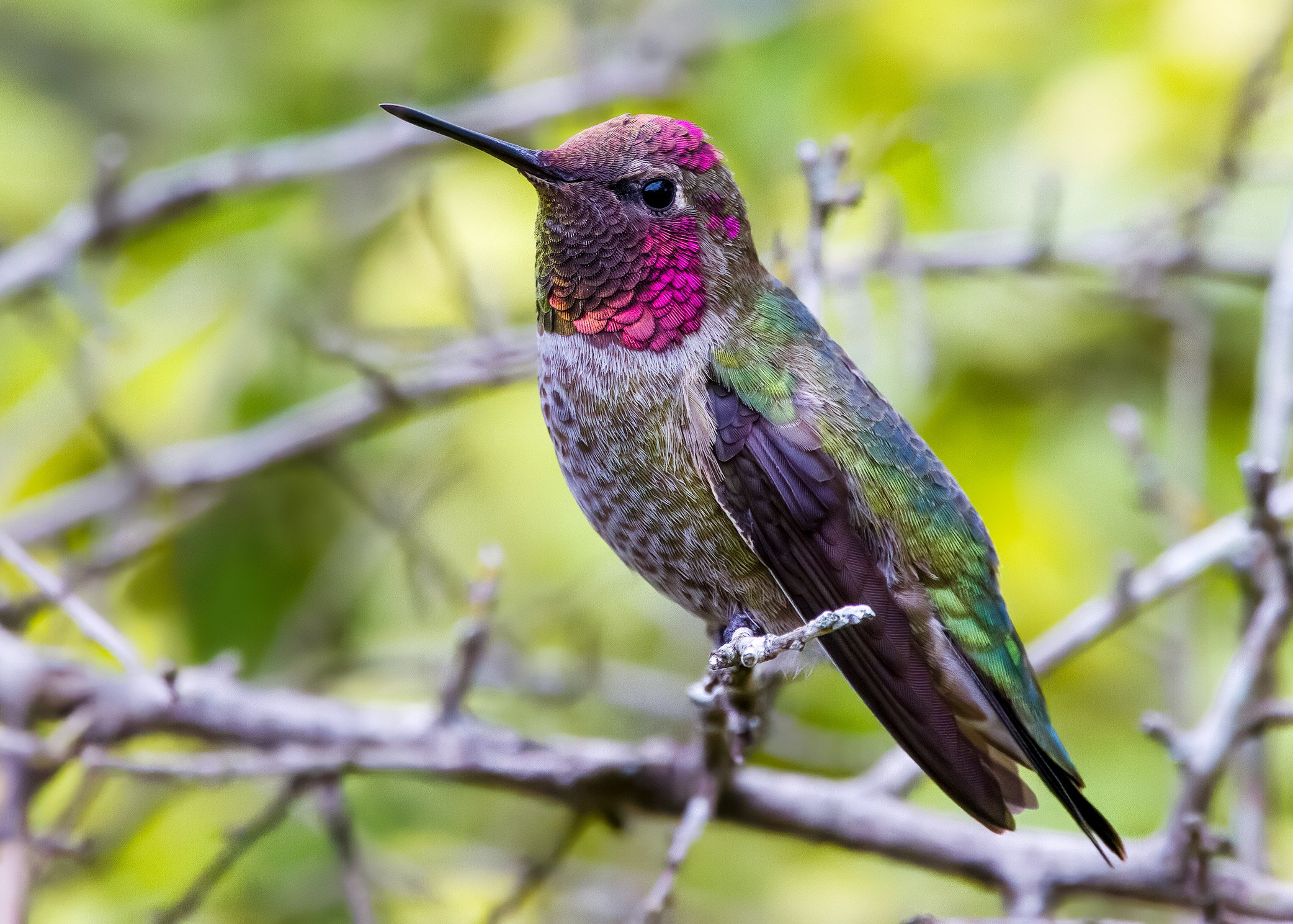
Recent Rarities
Anna’s Hummingbird
Worm-eating Warbler
The Worm-eating Warbler is a unique warbler of the forest understory which only occasionally reaches Austin during spring migration, as most of the population migrates up the coast. They can often be seen near eye level as they investigate clumps of dead leaves and vines for insects. My friend Erica (who first spotted this one) and I find one of these nearly every year at Nicholas Dawson Park, and their relatively confiding nature (in my experience) makes them easy to observe.
Photographed at Nicholas Dawson Park, 4.20.25.
Anna’s Hummingbird
I was lucky to spend a few days with this adult male Anna’s Hummingbird at a friend’s house in west Austin. Year-round residents of California and the Pacific, a number of them wander east every winter and show up in Texas and the Gulf Coast states. This has been a particularly good year for them in Texas, with multiple sightings in various areas including some adult males, which are more infrequently seen. These are distinguished from other male hummers in our area by their brilliant magenta head, which when not catching the light appears dark.
Photographed in Austin, 2.27.25.
Rufous-backed Robin
When an ultra-rare bird lingers in the same spot for over a week, I had the same thought as nearly every other birder in Texas—you can’t not go try to see it! The Rufous-backed Robin, usually found in Western and Central Mexico, is rare in Texas but has become a regular visitor to Arizona and the Southwest border region. This individual has been appearing at regular intervals throughout the day at the water feature at Lora's Blind in South Llano River State Park near Junction.
Photographed at South Llano River State Park, 2.18.25.
Ferruginous Hawk
A large, pale, attractive hawk of open country, the Ferruginous Hawk is uncommon to locally common in winter in Central Texas. With the kind help of a local birder, I spotted three of these birds near Bastrop and got some photos when one of them flew very close to the road as we were watching another one in a tree. They can look very similar to pale Red-tailed Hawks, but the dark feathered legs, yellow gape to the bill, and near-white tail make them stand out.
Photographed on Loop Road, Smithville, 1.18.25.
Black-throated Gray Warbler
Finally got another one of my nemesis warblers today - a Black-throated Gray Warbler. Normally found in the western part of the country from the Pacific Northwest through New Mexico, we occasionally see them in Texas as winter vagrants, much like the Black-throated Blue from last month. Texas's mild winters offer these insect-eating birds a steady food supply during their stay, and this adult male has been munching on caterpillars at Lakeshore Park since at least Friday. It remains to be seen if he sticks around after a cool front comes through on Wednesday, but I hope to get more opportunities to photograph him.
Photographed at Lakeshore Park, Austin, 12.21.24.
Western Bluebird
I was watching bluebirds at Roy G. Guerrero Park when I heard one make a call I wasn’t familiar with- a short “kew”, very different from the usual two-note slurred call of our Eastern Bluebirds. Upon closer examination, it was a very rare for the county Western Bluebird, and subsequent observations by others turned up a pair! A very exciting find especially for the eastern part of the county.
Photographed at Roy. G. Guerrero Park, 11.12.24.
Black-throated Blue Warbler
I just missed seeing one of these in Port Aransas back in September, so I was thrilled when I got a tip that one was hanging out in San Antonio. These eastern warblers tend to show up in the winter months in Texas as vagrants, and unlike many warbler species, the males do not have a different "alternate" (breeding) plumage, so they look handsome year-round. The greener females look so different that early ornithologists thought they were a separate species, but they have a telltale small wing patch similar to the males. These warblers often forage in low shrubs or on the ground, which makes them easy to observe, and this little guy didn't seem fazed by a small group of us taking his picture. An exciting day and beautiful bird for an otherwise difficult week!
Photographed in Brackenridge Park, San Antonio, 11.9.24.







